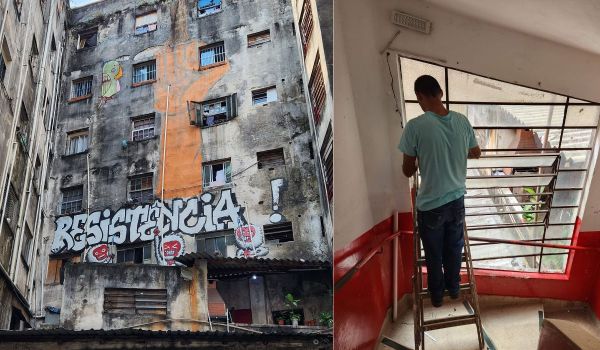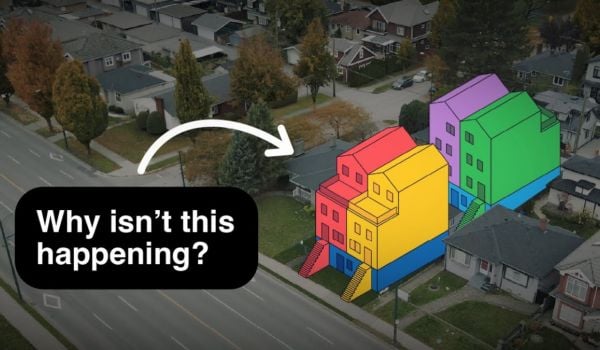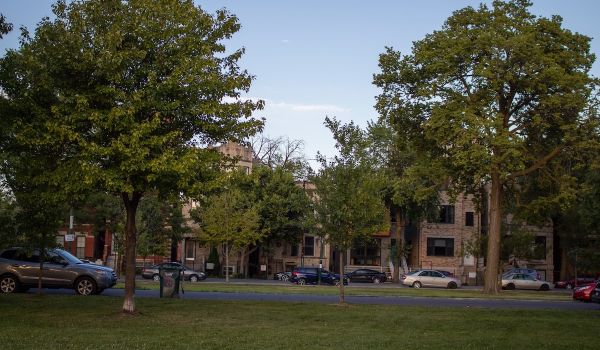In a housing crisis, much of the attention goes to keeping people housed, building new housing and keeping that housing affordable. But the deteriorating quality of much urban housing – and the impact this can have on the day to day lives of tenants – often fails to get as much attention. In most cities, responsibility for monitoring housing quality falls on a network of building inspectors who can levy fines against negligent landlords.
In her new book “Stacked Decks: Building Inspectors and the Reproduction of Urban Inequality,” Tulane sociology professor Robin Bartram shows how and why these systems are structurally set up to fail tenants. Bartram spent two years embedded with building inspectors in Chicago, shadowing them during the course of their work, as well as interviewing politicians, tenants and landlords. She combined this field work with analysis of the city’s building code and inspection records. What she found is that inspectors are more likely to empathize with small landlords than with low-income tenants – and that even when inspectors aligned with tenants, their attempts at punishing bad landlords could backfire. This interview has been edited for length and clarity.
Next City: What insights should tenants take from your book when thinking about how to improve their housing conditions?
Robin Bartram: One of the unfortunate things about inspectors is that they do tend to overlook tenants. I think [it would help] if they were less able to do so, through tenant unions or more collective efforts on the part of tenants and elected officials to make more people aware of what tenants deal with.
In the book, I talk about how inspectors sympathize with struggling homeowners, which is not something you would expect. But by contrast, they don’t tend to sympathize with tenants. A large part of that is just social distance. Very often they are going after big landlords, but it’s not necessarily to protect tenants – it’s more punitive towards big landlords.
Next City: You found that landlords with citations for building code violations would make improvements but then raise the rent on their tenants to pay for it. Are smaller landlords more likely to pass on those expenses, or is it more common among large landlords?
Bartram: Some evidence suggests that smaller landlords might try to keep things affordable, as opposed to professional landlords who care the most about the bottom line, and perhaps making repairs is more of an excuse to increase rents than a necessity. But I don’t actually have data on the comparison between types.
It’s definitely the notion among inspectors that these big equity-backed professional landlords, that big buildings mean that owners or managers have funds, and therefore, there was really no excuse to not be keeping up with the building code. The smaller, maybe owner-occupier landlords – inspectors are much more likely to only fight people for really serious violations. That distinction about who really does have money might not be accurate in the real world, but it’s one inspectors buy into.
Next City: Do the building code violations that inspectors levy actually lead to better living conditions?
Bartram: Technically, yes. If they are citing them for violations, those violations are getting fixed. But there is very little follow up, so there really isn’t a good record of what has actually been done. It’s very hard to know whether the rents are going up but the housing stock is improving, or whether the rents are going up and the housing stock isn’t improving.
Next City: Should cities be revamping how they collect data on inspections, so that there is a better record of whether problems were fixed?
Bartram: That would have made my life a lot easier. There could be follow-up inspections, which would mean there would need to be more inspectors to complete inspections that are already low on people power and resources as it is.
The other way would be through the courts. When buildings are in housing court, there is a lot more follow up on the part of the court-appointed inspector to find out what repairs have been done. But then those records don’t correlate with the [Department of Buildings records] of building violations. You could go through court records and match them back to building violation records, but it certainly isn’t readily accessible and available.
The housing court in Chicago is run by the county; the Department of Buildings is run by the city. An inspector’s job could be to go back to the building violation records and note down which ones were repaired and which ones weren’t. But that doesn’t happen at the moment.
Next City: One would think cities would be invested in seeing if their inspections are having a positive effect. Are there any cities that are tracking inspections well?
Bartram: And also a way of tracking landlords and checking what they actually do and what kinds of living conditions they’re providing. I think the Chicago Data Portal was fairly standard. Large U.S. cities have a similar format. They list a decent amount of information about initial building violations. I haven’t found any city where the system is any more useful.
Next City: What are the roadblocks to having more effective building inspections?
Bartram: There would need to be a lot more inspectors. They’re already four months or so behind on following up on 311 calls. The task seems completely out of reach to the inspectors that I spoke of because of how busy they already are. In terms of outcomes, it would need to go hand-in-hand with some kind of system of rent control or some oversight to make sure that landlords weren’t just hiking their rents in response to violations or in response to proactive inspections.
If we just began proactive rental inspections, that would be my main concern. I want to be clear that I do not blame building inspections for rent hikes. Rather, I place the onus on the for-profit housing market. Inspectors work within this system and have limited power to make an impact on landlords’ profit-increasing strategies.
Next City: In your book, you mention racial blindspots among inspectors. Would hiring non-white inspectors change this?
Bartram: Most inspectors come from the construction industry, and in Chicago, at least most construction workers historically have been white working class men. I observed such an entrenched consensus among inspectors, even inspectors who weren’t white. I don’t think that the real problem lies with who the inspectors are as much as the disparate housing landscape that they deal with. Moments of discretion on the part of inspectors can have such disproportionate effects because of racialized poverty.
Next City: Did you come across building inspectors who sympathized with tenants?
Bartram: There were definitely moments where inspectors were abhorred by some of the living conditions that tenants were dealing with. And they did express sympathy, particularly for tenants who weren’t getting vouchers, weren’t getting state assistance, but were – in the inspector’s words – still trying to do the right thing.
But the main takeaway in my eyes is that even if inspectors really care about tenants, they don’t really have much recourse to help tenants out in their jobs.
Their actions can either penalize or perhaps show some leniency towards landlords, but they didn’t really have any kind of power as building inspectors to help tenants out. Because not fighting a landlord isn’t going to help tenants, but fighting a landlord arguably means that rents increase. Their lack of compassion towards tenants was striking by comparison to their compassion towards struggling homeowners – but at the same time, almost immaterial, because they couldn’t do anything to help tenants.
Next City: Is there a way to determine with certainty that landlords are raising rents in response to these building inspections?
Bartram: I have an article specifically about this, where I match properties’ rent increases to whether or not they had an inspection or building violations. You can never exactly prove or claim causation. But I do show a strong correlation between getting cited for building violations and increases in rents. I don’t think there really is a foolproof way at the city level to figure out why landlords hike rents, and how much it has to do with covering their costs, with rehabbing and thinking they could market rents to people who make more money. The complexities of trying to figure out why exactly it is that rents increase leads me back to the simplest answer possible, which is that we need some system of rent control to be able to prevent all of this. Because we can’t know exactly why landlords do specific things and how much it really has to do with building violations.
Next City: To the larger causes of this, you’ve expressed concern that recent federal funding puts more emphasis on subsidizing new construction and allocates less funding for maintaining and repairing housing.
Bartram: There’s a lot more attention to enabling and incentivizing new construction as opposed to keeping existing buildings in good, decent condition. This is another way that we could remove the correlation between building inspections and rent increases: if there was some system of subsidized, or dare I say free, maintenance. If 50 [state] governments or the federal government provided maintenance teams who went building by building along with building inspectors and then did some work.
Many cities do have emergency home repair programs. And in Pennsylvania, they just passed something called the whole home repair program. (Note: The Whole Home Repair program will provide grants for up to $50,000 to small landlords and homeowners for building repairs.) It’s a decent amount of money. There are programs that exist, they are just piecemeal. But I think that it’s time for a movement of cities and states to get behind this. Especially with much of the housing stock in cities like Chicago being over 100 years old, aging housing and maintenance is going to become more of a prevalent issue.
This article is part of Backyard, a newsletter exploring scalable solutions to make housing fairer, more affordable and more environmentally sustainable. Subscribe to our weekly Backyard newsletter.

Roshan Abraham is Next City's housing correspondent and a former Equitable Cities fellow. He is based in Queens. Follow him on Twitter at @roshantone.


















